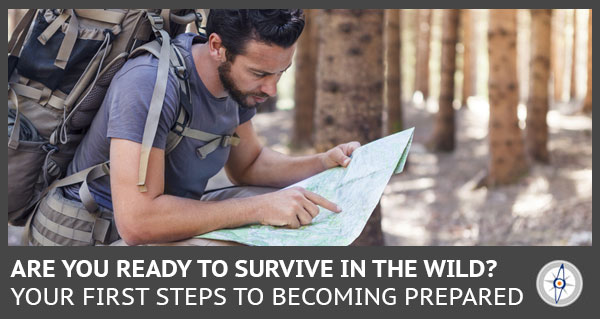
I am often asked how I got started in survival. The best answer I have is I became a survivalist long before it was called survival. I was in Boy Scouts as a child and actually ended up becoming an Eagle Scout. I also had a father and grandfather that were avid hunters and fishermen. These experiences gave me a love of the outdoors and gave me a taste of survival.
It did not start being called survival until a few years ago. As you become interested in this journey of learning and building your skills, you could be lead astray. Many new survivalists become focused on the wrong things.
Becoming a survivalist is not about having the best and most expensive gear. It is not about stockpiling food to last you for years. It is not about building a bunker or spending every weekend at the gun range.
Starting in survival is all about prioritization.
You only have so much time and money to dedicate to your efforts. It is important that you direct that time and money into tasks that could actually save your life. Understand that gear can be lost, broken, or stolen.
Skills will always be there to help you when needed. In this article I will walk you through the first steps you should take to become an effective survivalist.
Starting Survivalist Gear
I am a big advocate of skills over gear. However, there are a few basic items that are needed to help you develop your skills.
Fire
One of your biggest priorities in survival is creating fire. You really need at least one fire-starting tool to learn how to build a primitive fire.
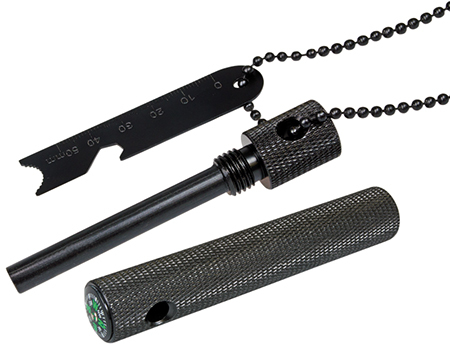
Boker Plus Fire Starter Striker
I suggest buying a cheap ferro rod so you can learn which materials will catch a spark and which will not. You may also want to buy some inexpensive fire-assistance products such as Wetfire cubes to help you in the process.
Water
For water purification, it is very difficult to achieve the desired result without some basic gear. Either a bottle filter or a straw style filter are very important for learning to purify water. In addition, I would suggest some iodine tablets as a backup plan in case your filter becomes clogged.
Shelter
For shelter building there are only two products that I find important. A thick emergency blanket is a good item to own. They typically are tarp style and have eyelets at the corners so you can use it for a waterproof shelter.
In addition, you should always have some 550 paracord with you. This cordage is super strong, but can also be split open to give you over 50 feet of cordage out of a single shoelace. I always lace my boots with paracord. These items can help you learn how to build an excellent shelter.

available at Amazon.com
Food
For food, a good wild edibles guide for your area is a smart investment. I love knowing what plants in the area can keep me alive, but that knowledge takes time. You will want a book with pictures to help you through the learning process. It is the best way to learn which plants will keep you alive and which plants will kill you.
When you first start buying gear, take the time to read product reviews and go cheap. It will take some time for you to figure out what gear you enjoy using and what gear will collect dust in your closet. You can get everything that you need to get started without spending much money.
For a list of the gear we have used and trust, check out the “Shop” dropdown in the menu ^.
Easing into Survival
Understand that survival means risking your life. Do not take this lightly. You should never set out into the wilderness to attempt survival without somebody with you and a way to communicate with emergency services.
My first survival experience was on our property. We own 10 acres, but the challenges were just as extreme as being 1000 miles away. The only difference was that I could walk to help if needed. You should practice all of these skills at home before you ever have to rely upon them in a survival situation.
Once you feel like you have the skills mastered at home, you can plan a trip with somebody else. You should tell local authorities where you are going along with all of your family and friends. You should know that your area has cellular reception so you can call for help if needed.
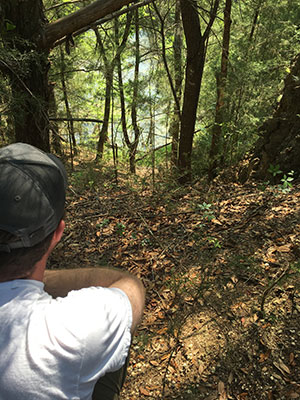
Scouting for Fresh Water
This first trip should be a camping trip without all the gear you would normally bring. Make sure the weather and the area you choose will be manageable. You cannot risk too much if you want to learn and stay safe.
Take each moment in the wild to practice your skills. Challenge yourself. Force yourself to purify water, force yourself to find food, force yourself to build a shelter, force yourself to build a primitive fire.
However, have a backup plan for each of these elements. Have some food stashed for just in case, have some bottled water, have an emergency blanket for shelter, have a lighter for fire. You want to push yourself, but push yourself in a safe environment.
First Survivalist Skills to Learn
Food
As stated before, the easiest way to put a meal in your belly is through wild edibles. However, there are a few basic rules you want to consider. For berries, go with blue or black in color. Blue or black berries are edible 90% of the time. Eating red berries gives you roughly a 50% chance of them being edible. White berries are only edible 10% of the time. Mushrooms are too unpredictable. I always stay away from mushrooms.
However, at some point you need some protein. There are a few easy ways you can get protein in the wild. One is a fish trap. Fish are one of the easiest ways to get protein in the wild. If you have shallow water, you just need some poles or some rocks. Use them to arrange a wall that is heart shaped with the cleave facing upstream. You can bait the trap or leave it empty. The fish will swim into the trap and become confused. Then you can jump in and pull them out of the water.
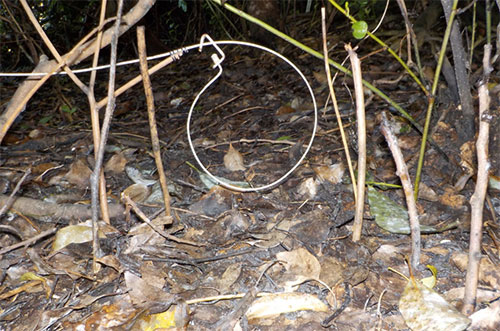
Small game snare trap
If you decide to trap small game, a snare trap is the way to go. You can use wire or cordage for this. Just tie the end into a loop with an overhand knot and then put the end back through the loop. Then tie the end to something secure. You want your loop to stay vertical, so you may need sticks to hold it in place. When an animal walks into the trap, it will close around its neck.
Water
Water purification is vitally important for new survivalists. You can only survive without water for about three days before dying of dehydration. Most of the fresh water on the Earth, however, is tainted with bacteria and parasites.
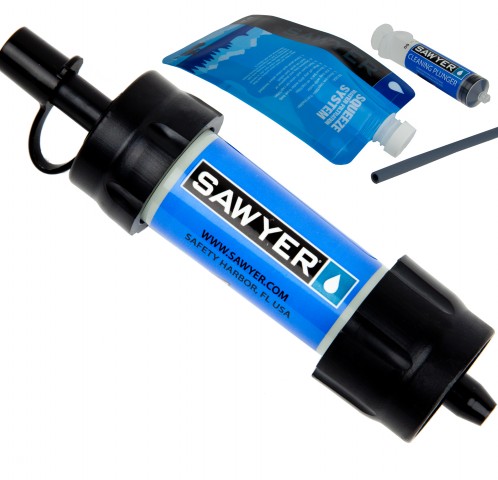
Sawyer Mini Water Filter
You can boil the water, use a bottle filter, or use a straw filter to eliminate the pathogens. You can also use iodine tablets if you have the time. Purification can be bypassed if you can find a spring or if you have a way to collect rainwater.
One of the keys to hydration is knowing how to find water. It is not always as easy as you would think. You should follow the terrain down to the lowest spot you can find. Even if you do not find water, there may be a water table below.
Digging a few feet down to find some clean water is worth a try. Look for areas where the plants are greener than the surroundings.
Fire
If you want to get a fire going, you must know what materials you need. This starts with looking at your surroundings.
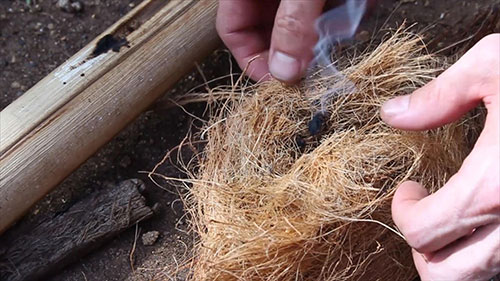
via wonderhotwo.com
You will need to start with a tinder bundle which consists of dry, fine materials that are highly flammable. Bird’s nests, birch bark, and cattail fluff are all good for tinder bundles.
Then for kindling you want sticks that are ¼ inch to one inch thick. You need a bundle that is large enough for you to wrap both arms around. For larger wood, collect a stack at least knee high. With that said, it’s best to collect what you think you need and then double it. This will ensure that you have enough wood to keep it going all night.
To light your fire, shape your tinder bundle into a bird’s nest shape. Hold your ferro rod in the center and strike it with your knife or striker. It should shoot sparks into the tinder. Continue until you see smoke or a flame. Then pick up the tinder bundle and gently blow on the embers until the whole thing ignites.
Set it down and start feeding it kindling until you have decent sized flames. Then when you know it will not go out, you can add the larger wood. Be ready to go back to smaller sticks if it starts to go out.
Shelter
Rarely will you have supplies with you to build a shelter. In most cases you will have to use the natural resources around you to build your shelter.
Keep in mind that getting your body up off of the ground is just as important as putting a roof over your head.
Either build a platform, or use dry leaves, grasses, or spruce boughs to create insulation between yourself and the cold ground. For poles you should find dead branches and break them to length between two tree trunks that are close together. Never stomp on branches or try to break them over your knee. They can break poorly and cause injury.
Once you have built a frame for your shelter, use more insulation on top as protection from the wind and the rain. Do not skimp on this step. It can sometimes take a pile of leaves four feet deep to make a shelter completely waterproof.
Specific Designs
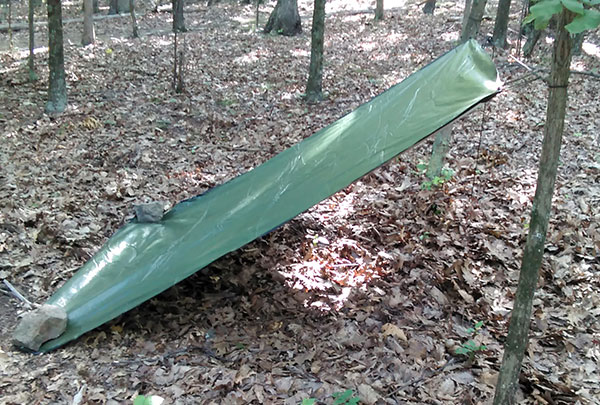
a simple tarp lean-to
The two most important shelter designs to master as a beginner survivalist are the lean-to and the debris hut. A lean-to uses a ridge pole between two trees or two other poles. Then the frame poles are leaned against the ridge pole at a 45 degree angle.
For a debris hut, you use two shorter poles to create an A shape at one end. Then the ridge pole is attached at the top of the A and the other end rests on the ground. Again, frame poles are leaned on the ridge pole at a 45 degree angle, but in this case on both sides.
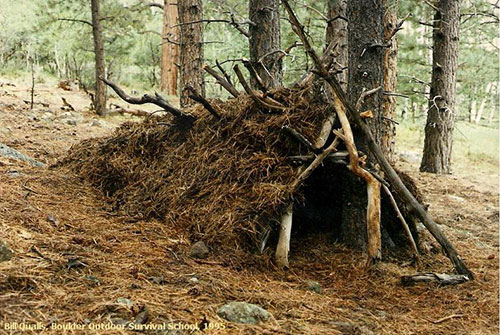
A debris hut
The lean-to is ideal if you have a fire, and the debris hut is ideal if you do not have one. In addition, you can use ready-made shelters found in nature.
Caves are always nice if it is pouring rain and you do not have time to build. You can also crawl under a large spruce tree if you are in deep snow. The spruce boughs leave a dry area covered in dead spruce needles underneath. The snow around the tree will block the wind and keep you protected.
Becoming a Survivalist
You have already taken the most important step of becoming a survivalist by deciding to take action. Now you have to prioritize what action to take.
As you start learning the needed skills to survive, be sure you are careful about the sources you use. There are dozens of survival specialists producing television shows, blogs, Youtube videos, and books.
Some are legitimate and some are more concerned with ratings and entertainment. If a survival expert is jumping off of waterfalls or drinking their own urine, you can go ahead and change the channel.
I cannot emphasize enough the importance of practice for a survivalist. Do not make the mistake of watching a video or reading an article and deciding you are prepared. Take the time to get out in nature and test your skills. This is why I put myself through several survival scenarios each year.
Having tested your abilities, you will be more confident when the time comes to rely upon those skills. Keeping a cool head is the most effective strategy when SHTF, so that added confidence is huge. With the right skills and some inexpensive gear, you will get through the situation just fine.
=====
Become a Survival Dispatch Insider …
We bring together survival enthusiasts and preppers to share skills and knowledge, so you can enhance your preparedness for emergencies and ensure the safety of you and your community.
The Results You’ll Get …
Our community, courses, and memberships are pretty special. We focus on the ways it will make a huge difference in your life.
Here are a few of the things you’ll be able to do as a member of Survival Dispatch Insider …
1) Improve your emergency preparedness by learning survival skills and strategies from experienced preppers.
2) Build lasting connections with like-minded individuals that share your passion for safety and readiness.
3) Access a wealth of knowledge and resources to assist in protecting you and your community during unexpected situations.
Click HERE to get started.
=====
